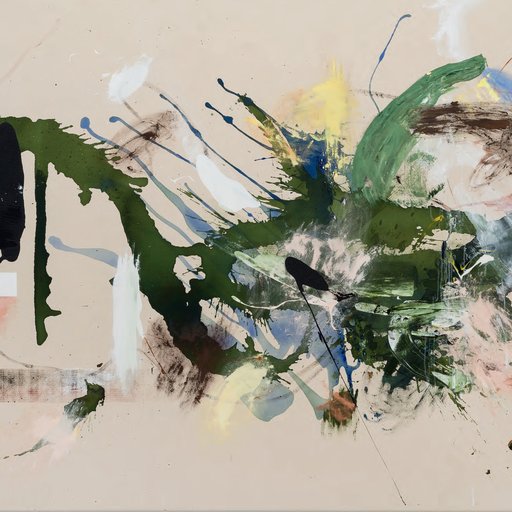Alfred Jensen
Alfred Jensen is a painter and intermittent sculptor whose experience befriending and collecting some of the modern geniuses of the early 20th century shaped his interest in abstract artworks with a mystical, numeric focus. As a youth, Jensen often created portraits of classmates, colleagues on the ships he manned, and even animals. He attended Hans Hofmann’s drawing school in Munich and went on to study further with Charles Dufresne and Charles Despiau in Paris. His most significant influence was the discovery of Goethe’s color theory, which spurred the artist to create parallel color diagrams that presented unique color analysis for the viewer. When Jensen moved to the United States in 1934 he became friends with Mark Rothko and Sam Francis, further influencing his transition toward color theory. Although Jensen’s work was at first more logical than his cohorts, he would eventually integrate figures, Pythagorean numerology, Mayan calendars, nods to farmland grid seen from an aerial perspective, and the I Ching. Although he often shifted his emphasis, Jensen was beholden to the “edges of invisible shapes at the threshold of [his] awareness."
Jensen’s work has been exhibited at prominent institutions including the Solomon R. Guggenheim Museum, New York, Kunsthalle Basel, Switzerland, …
Alfred Jensen is a painter and intermittent sculptor whose experience befriending and collecting some of the modern geniuses of the early 20th century shaped his interest in abstract artworks with a mystical, numeric focus. As a youth, Jensen often created portraits of classmates, colleagues on the ships he manned, and even animals. He attended Hans Hofmann’s drawing school in Munich and went on to study further with Charles Dufresne and Charles Despiau in Paris. His most significant influence was the discovery of Goethe’s color theory, which spurred the artist to create parallel color diagrams that presented unique color analysis for the viewer. When Jensen moved to the United States in 1934 he became friends with Mark Rothko and Sam Francis, further influencing his transition toward color theory. Although Jensen’s work was at first more logical than his cohorts, he would eventually integrate figures, Pythagorean numerology, Mayan calendars, nods to farmland grid seen from an aerial perspective, and the I Ching. Although he often shifted his emphasis, Jensen was beholden to the “edges of invisible shapes at the threshold of [his] awareness."
Jensen’s work has been exhibited at prominent institutions including the Solomon R. Guggenheim Museum, New York, Kunsthalle Basel, Switzerland, Stedelijk Museum, Amsterdam, Louisiana Museum, Humlebaek, Denmark, New Museum, New York, Museum of Contemporary Art, Chicago, The Newark Museum, New Jersey, and Santa Monica Museum of Art, California, among others. The artist participated in the 1978 Sao Paulo Biennial, the Venice Biennale in 1964, and the Whitney Biennial in 1973 and 1977. He was a Tamarind Fellow in 1965.
Art Gallery of Western Australia, Perth, Australia
Baltimore Museum of Art, Maryland
Carnegie Museum of Art, Pittsburgh, Pennsylvania
Dallas Museum of Art, Dallas, Texas
The Dayton Art Institute, Dayton, Ohio
Dia Center for the Arts, New York, New York
The Solomon R. Guggenheim Museum, New York, New Yor
Hirshhorn Museum and Sculpture Garden, Washington, D.C.
Kunstmuseum, Bern, Switzerland
Kunsthalle, Basel, Switzerland
Kunsthaus, Zurich, Austria
Los Angeles County Museum of Art, Los Angeles, California
Louisiana Museum of Modern Art, Humlebaek, Denmark
The Museum of Modern Art, New York, New York
National Gallery of Art, Washington, D.C.
Rijksmuseum Twenthe, Enschede, Netherlands
San Francisco Museum of Modern Art, San Francisco, California
The Seibu Museum of Art, Tokyo, Japan
Smithsonian Institution, Washington, D.C.
Whitney Museum of American Art, New York, New York
Pace Gallery, New York, New York





